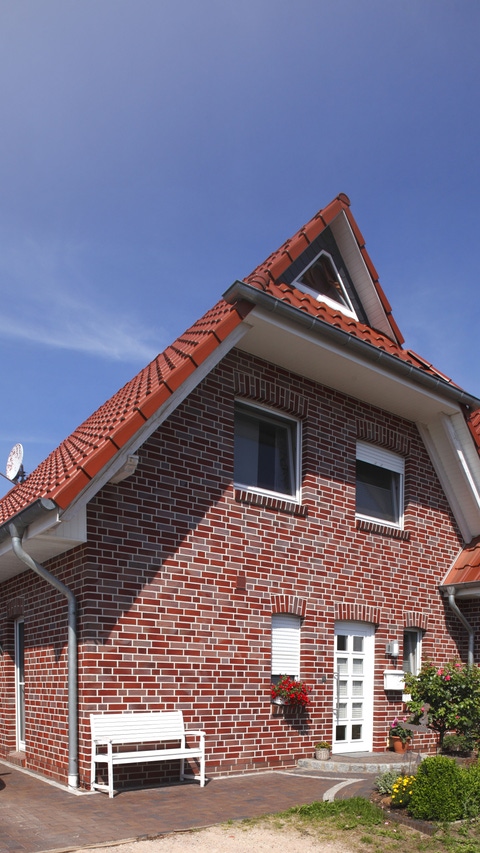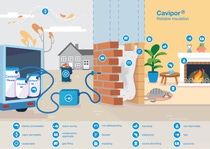Your benefits
- mineral based -> non-combustible
- thermally insulating -> WLG 035
- clean & fast -> dust free & self-sealing
- air & water-based -> low emission
- open-pored -> moisture regulating
- disposable -> sustainable

Construction
Cavipor® is the new mineral-based in-situ foam system for energetic renovations of double-wall masonry.
Cavipor® is a non-combustible mineral-based insulation material that can be processed quickly and easily. This foam is suitable for subsequent energetic renovations of buildings constructed of double-wall masonry. In general, this measure of retro-fitting by insulating the cavity wall has an amortization period of 5-7 years making it a highly profitable investment – both economically and ecologically. In addition to previously established systems like stone wool, glass wool, EPS beads, synthetic resin foam, and recycled shredded paper, Cavipor® now offers a new system that combines the advantages of a hydrophobic and open-pore mineral insulation material with the fast, safe, and seamless processability of a self-sealing foam system. In contrast to most other systems on the market, Cavipor® foam can be disposed of along with construction waste without having to painstakingly separate it during renovations or demolitions, or re-used as a foundation material.
Cavipor® is the world's first 3-component system for manufacturing a mineral-based in-situ foam. It was developed at BASF through 8 years of intensive research with over 5000 test recipes, and is protected by multiple patents. The system received general technical approval under construction law.
The Cavipor® system combines the advantages of a mineral based insulation material with the simple, safe, and clean processing of a foam system. The water-based components can be transported and processed dust and fiber-free, offering 10x the foam volume after being expanded with air. The fresh foam is injected into the cavity wall through small filling holes, where it does not expand further or build up internal pressure. The foam's flow properties ensure that it fills the cavity layer seamlessly − largely independent of the layer's thickness and any narrow areas.
Cavipor® foam is self-sealing. It is prevented from exiting through small holes and cracks in the wall, and no preliminary work or reworking is generally necessary. The fresh foam already offers good insulation capabilities at this point. After the drying process, during which the breathable foam continuously dries out by releasing the water as water vapor without causing any damage, the foam will reach its optimal thermal insulation level and notably dampen even ambient noise.
The dry foam, which has a bulk density of 30g/l, sticks to the inside of the wall surfaces, preventing the material from sagging. It is hydrophobic and does not absorb any liquid water. However, water vapor can continue to diffuse through the open pores of the foam, while part of the water vapor can also be stored in the foam itself. The foam adapts to ambient climate changes, even regulating ambient moisture, and can help contribute to a better indoor climate. The dried foam consists of 90% inorganic components, meaning it is non-combustible and can be disposed of with construction waste during demolition or reused as foundation material.

